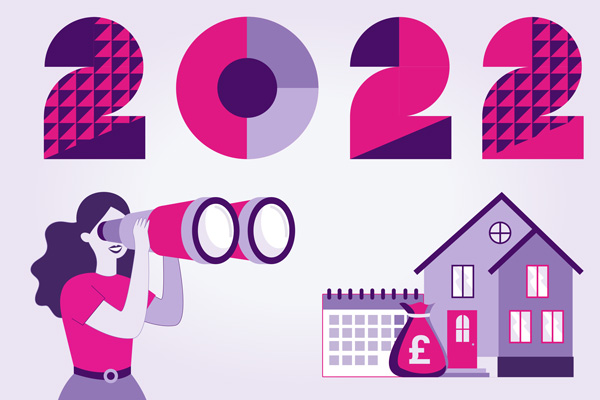
The last 22 months or so have undoubtedly been a sellers’ market, with record high demand outstripping supply and leading to steadily rising or much-increased house prices across all regions of the UK.
But there have also been considerable opportunities for buyers, thanks to tax breaks, favourable borrowing conditions and mortgage lenders bringing out competitive products to win business.
This is likely to still be the case in 2022, where – despite the ongoing uncertainty surrounding Covid-19 – there are causes for optimism.
Here are five reasons to be hopeful about buying in 2022.
1: Most First Time Buyers still have a stamp duty holiday
Amid the hype of the stamp duty holiday, it was easily forgotten that most First Time Buyers will pay no stamp duty on their first purchase.
This has been the case since 2017, when former Chancellor Phillip Hammond moved to exempt First Time Buyers acquiring homes worth up to £300,000 from paying any SDLT. This is most First Time Buyers.
So, in fact, the stamp duty holiday made no difference to most First Time Buyers, as they already have a permanent stamp duty holiday of their own. This won’t be changing anytime soon, and certainly not in 2022, so it’s one less thing for First Time Buyers to worry about.
However, there is a worrying lack of awareness about this stamp duty exemption for First Time Buyers. Recent research found that only 17% of under-35s understood that First Time Buyers may not need to pay stamp duty. This knowledge gap will need to be closed if young buyers are to feel confident about their chances of getting on the ladder this year.
2: New schemes to come into their own, plus potential new ones
2021 saw the introduction of several new schemes, including First Homes and the 95% mortgage guarantee scheme, the effects of which should become clear this year. The 95% mortgage guarantee scheme is set to finish at the end of 2022 but may be extended further if necessary.
Fallout from the pandemic should be calmer by then, so the need for a government-backed scheme to reassure nervous lenders may not be needed.
Meanwhile, Help to Buy (2021-2023) will enter its second year as the Coalition’s flagship scheme is gradually phased out.
Help to Buy (2021-2023), which is aimed squarely at FTBs to bat off criticism that the previous iterations of this scheme haven’t been helping this cohort enough, has regional price limits.
The limits are set at 1.5 times the average first-time buyer price in each region in England, to keep the prices of new homes closer to the average regional first-time buyer property prices, thereby cutting the amount that first-time buyers need to borrow.
As well as these existing schemes, there is every chance that new ones will be introduced - governments like nothing more than introducing flagship housing schemes to increase their appeal to young First Time Buyers.
3: Interest rates are still very low
Despite the recent rise in interest rates – up from 0.1% to 0.25% - and further anticipated ones in the first half of next year, to combat soaring inflation, interest rates are still at very low levels historically. And any future rises are expected to be small and incremental.
This is good news for borrowers, who tend to gain if interest rates are low. It may be an especially good time, early next year, for people to lock in low interest rates on fixed-rate deals, before further rises occur. This could encourage hesitant buyers to accelerate their home-buying plans, to ensure their mortgage repayments are cheaper for longer.
4: The supply and demand imbalance should narrow
The supply/demand imbalance has grown wider than ever in the last few years, fuelled by the stamp duty holiday – which brought a huge number of buyers onto the market, looking to take advantage of the tax breaks – and the long-term and chronic shortage of supply.
But there is a chance this could start to narrow next year as the market cools slightly and starts to return to normality after a few years of being supercharged.
There has already been evidence that demand has slipped slightly since the end of the stamp duty holiday, as was to be expected.
And it seems highly unlikely that demand will be as high as it has been recently. This should make it easier for buyers in terms of competing for properties, while more sellers might be encouraged onto the market thanks to the current strong rate of house price growth.
5: More new homes on the market
The government has a long-held target of reaching 300,000 new homes a year by the middle of this decade – something it’s still some way off achieving. This should encourage the government to accelerate current and future house-building programmes, something it mentioned in the recent Budget, with plans for a major regeneration and investment in brownfield land and sites.
There are currently many issues in the construction sector – due to Covid, Brexit, supply shortages, mental health problems and labour difficulties – but you only need to look at the cranes and building sites gracing many towns and cities to see how many new projects are underway, many of which will be suitable for those looking to buy.
And so, despite some ongoing issues and challenges, there are many reasons for buyers to be hopeful in 2022.